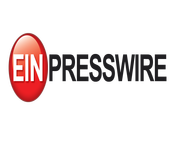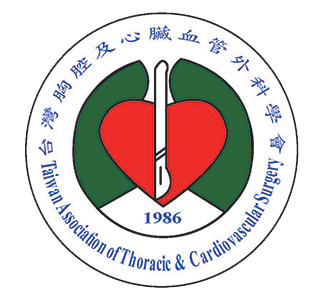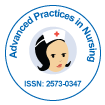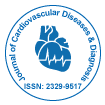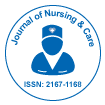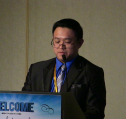Theme: Advancing into the Future of Cardiology and Cardiac Nursing
Cardiac Nursing 2019
<b>z35W7z4v9z8w</b>
Conference Series llc Ltd. is inviting all participants across the globe to attend ''International Conference on Cardiology and Cardiac Nursing'' on September 09-10, 2019 | Hanoi, Vietnam.This event will bring together world-class professors, scientists and cardiologists to discuss Cardiac imaging, Coronary artery diseases, Cardiac biomarkers, Echocardiogram/Echocardiography, Transesophageal echocardiography, Stress echocardiography, Three-dimensional echocardiography, Pediatric echocardiography, Nuclear Cardiology, Cardiomyopathy and Myocardium. Cardiac Nursing 2019 is designed to provide diverse and current education that will keep nursing professionals a breast of the issues affecting the prevention, diagnosis and treatment of cardiovascular disease. The conference will be organized around the theme "Advancing into the future of Cardiology and Cardiac Nursing”.
Cardiac Nursing 2019 aims to provide an opportunity to share knowledge, expertise along with unparalleled networking opportunities between a large number of medical professionals like Directors, Heads, Deans, Professors, Scientists, Researchers, Cardiologists, Founders and Employees of the related companies, Associations, Organizations, Laboratory members and Young researchers working in the field of nuclear cardiology & echocardiography treatment. This conference mainly focuses on spreading the awareness about challenges in this fields and how to prevent and manage the techniques of Cardiac Imaging, Cardiology and Cardiac nursing.
Conference Series llc Ltd. Organizes 300+ conferences, 500+workshops and 200+symposiums on Clinical, Medicine, Nursing, cardiology diagnosis workshops, cardiac nursing conferences, cardiac conferences and Science & Technology every year across USA, Europe, Asia, Middle East, Australia and UK with support from 1000 more scientific societies and Publishes 500 open access journals which contains over 30000 eminent personalities, reputed scientists as editorial board members.
Why to attend??
Encounter the target market with members from across the globe, committed to learn about Cardiology and cardiac nursing techniques. This is the best opportunity to outreach the largest gathering of participants from around the world. Conduct presentations, distribute and update knowledge about the current situation of nuclear cardiology & echocardiography technique and receive name recognition at this 2-days event. World-eminent speakers, most recent researches, latest treatment techniques and the advanced updates in Nuclear Cardiology are the principal features of this conference.
Target Audience:
Our Organization would be privileged to welcome the:
-
Directors of Cardiology and Cardiac Nursing or related Programs or Associations
-
Heads, Deans and Professors of Cardiology and Cardiac Nursing and related departments
-
Scientists and Researchers
-
Doctors
-
Cardiology and Cardiac Nursing Associations and Organizations
-
Laboratory members and Students working in the field of Nuclear Cardiology.
-
Registered Nurses
-
Nurse Associations
-
Nursing Students
-
Heart attacks and strokes are usually acute events and are mainly caused by a blockage that prevents blood from flowing to the heart or brain. The most common reason for this is a build-up of fatty deposits on the inner walls of the blood vessels that supply the heart or brain. Strokes can also be caused by bleeding from a blood vessel in the brain or from blood clots. The cause of heart attacks and strokes are usually the presence of a combination of risk factors, such as tobacco use, unhealthy diet and obesity, physical inactivity and harmful use of alcohol, hypertension, diabetes and hyperlipidaemia.
- coronary heart disease – disease of the blood vessels supplying the heart muscle;
- cerebrovascular disease – disease of the blood vessels supplying the brain;
- peripheral arterial disease – disease of blood vessels supplying the arms and legs;
- rheumatic heart disease – damage to the heart muscle and heart valves from
- rheumatic fever, caused by streptococcal bacteria
To understand how cardiac surgery works, it is helpful to know something about the anatomy of the heart. The heart is a muscle containing four compartments or chambers that separate oxygen-poor blood from oxygen-rich blood. The atria are the top chambers. They receive blood from the body. The ventricles are the bottom chambers. They pump blood out to the body. Oxygen-poor blood enters the right atrium, then moves through a valve to the right ventricle. It is then pumped out of the right ventricle to the lungs where it picks up oxygen. The oxygen-rich blood returns to the left atrium of the through the pulmonary vein, flows through a valve to the left ventricle, and is then pumped into the aorta. The aorta is the only artery carrying blood out of the heart. Smaller arteries branch off and carry blood to the rest of the body from this very large, thick, long artery. The first arteries to branch off the aorta are the coronary arteries. These carry a continuous supply of oxygen-rich blood to the heart.
Cardiac surgery is done to correct many different types of heart conditions. The most common are:
- congenital heart defects
- coronary artery disease
- arrhythmias
- aneurysm repair
- heart valve defects
- end-stage heart failure requiring heart transplantation
Nursing has a place with that works with patients who experience the ill effects of different states of the cardiovascular framework. Cardiovascular medical caretakers or cardiac nurses cure those conditions, for example, unsteady angina, cardiomyopathy, coronary course sickness, congestive heart disappointment, myocardial dead tissue and heart dysrhythmia under the supervision of a cardiologist. Heart medical nurse practitioners have the real work to do in basic circumstance. They are prepared for various practice range, including coronary consideration units (CCU), heart catheterization, serious patient consideration units (ICU), working theaters, cardiovascular recovery focuses, cardiovascular consideration focus clinical exploration, cardiovascular surgery wards, cardiovascular concentrated consideration units (CVICU), and cardiovascular restorative wards.
The tests you'll need to diagnose your heart disease depend on what condition your doctor thinks you might have. No matter what type of heart disease you have, your doctor will likely perform a physical exam and ask about your personal and family medical history before doing any tests. Besides blood tests and a chest X-ray, tests to diagnose heart disease can include:
- Electrocardiogram (ECG)
- Holter monitoring
- Echocardiogram
- Stress test.
- Cardiac catheterization
- Cardiac computerized tomography (CT) scan
- Cardiac magnetic resonance imaging (MRI)
The heart is a vital organ within our body, pumping oxygen-rich blood to the parts that need oxygen, and oxygen-poor blood back towards the lungs. Considering the importance of the heart, there are different types of Cardiac specializations like Cardiology, Vascular surgery, Electrophysiology and Cardiac Surgery with different purposes to maintain the health of the heart. All cardiologists study the disorders of the heart, but the study of adult and child heart disorders are through different training pathways. Therefore, an adult cardiologist is inadequately trained to take care of children, and pediatric cardiologists are inadequately trained to take care of adults. The surgical aspects are not included in cardiology and are in the domain of cardiothoracic surgery. For example, coronary artery bypass surgery (CABG), cardiopulmonary bypass and valve replacement are surgical procedures performed by surgeons, not cardiologists. However the insertion of stents, pacemakers is performed by cardiologists. Different Types of Cardiology For example: Adult Cardiology, Cardiac Electrophysiology, Cardio geriatrics, Echocardiography, Interventional cardiology, Pediatric cardiology ….etc.
6. Hypertension, Obesity & Stroke
Heart assaults and strokes are generally intense occasions and are chiefly caused by a blockage that keeps blood from streaming to the heart or mind. The condition where blood supply to mind has ceased incidentally, because of development of blood cluster which can be found in a corridor The most widely recognized explanation behind this is a development of greasy stores on the inward dividers of the veins that supply the heart or cerebrum. The reason for heart assaults and strokes are normally the nearness of a mix of hazard factors, for example, tobacco utilize, undesirable eating routine and stoutness, physical latency and unsafe utilization of liquor, hypertension, diabetes and hyperlipidemia. The danger of heart stroke can increment from four to five times on the off chance that you have atrial fibrillation. Heart stroke looks for a crisis medicinal consideration.
Stroke is when poor circulatory system to the mind realizes cell end. Long haul hypertension is a noteworthy hazard factor for coronary vein malady, stroke, heart disappointment, fringe vascular sickness, vision misfortune, and endless kidney illness. Hypertension is once in a while joined by side effects, and its distinguishing proof is normally through screening.
Coronary artery disease is a group of diseases that includes: stable angina, unstable angina, myocardial infarction, and sudden cardiac death. It is within the group of cardiovascular diseases of which it is the most common type. A common symptom is chest pain or discomfort which may travel into the shoulder, arm, back, neck, or jaw. Occasionally it may feel like heartburn. Usually symptoms occur with exercise or emotional stress, last less than a few minutes, and get better with rest. Shortness of breath may also occur and sometimes no symptoms are present. The first sign is occasionally a heart attack. Other complications include heart failure or an irregular heartbeat.
The field includes medical diagnosis and treatment of congenital heart defects, coronary artery disease, heart failure, valvular heart disease and electrophysiology. Physicians who specialize in this field of medicine are called cardiologists, a specialty of internal medicine. Pediatric cardiologists are pediatricians who specialize in cardiology. Physicians who specialize in cardiac surgery are called cardiothoracic surgeons or cardiac surgeons, a specialty of general surgery.
Cardiac regeneration is a broad effort that aims to repair irreversibly damaged heart tissue with cutting-edge science, including stem cell and cell-free therapy. Reparative tools have been engineered to restore damaged heart tissue and function using the body's natural ability to regenerate. Working together, patients and providers are finding regenerative solutions that restore, renew and recycle patients' own reparative capacity.
10. Angiography & Interventional Cardiology
Angiography of the heart is a method of contrast X-ray examination of the heart and blood vessels, produced for diagnostic of vessels thrombosis as well as for the endovascular correction of the existing pathology.
Interventional cardiology is a branch of cardiology that deals specifically with the catheter based treatment of structural heart diseases The main advantages of using the interventional cardiology or radiology approach are the avoidance of the scars and pain, and long post-operative recovery. Additionally, interventional cardiology procedure of primary angioplasty is now the gold standard of care for an acute myocardial infarction.
11. Clinical Cardiology & Diabetes
Clinical cardiac electrophysiology is a branch of the medical specialty of cardiology and is concerned with the study and treatment of rhythm disorders of the heart.
Diabetes mellitus (DM), commonly referred to as diabetes, is a group of metabolic disorders in which there are high blood sugar levels over a prolonged period. Symptoms of high blood sugar include frequent urination, increased thirst, and increased hunger. If left untreated, diabetes can cause many complications. Acute complications can include diabetic ketoacidosis, hyperosmolar hyperglycemic state, or death. Serious long-term complications include cardiovascular disease, stroke, chronic kidney disease, foot ulcers, and damage to the eyes.
12. Nursing Care
Nursing care is for people who need a qualified nursing care team available to them 24 hours a day. That might, for example, include people who need intensive rehabilitative care (like people who have suffered a stroke), people who need peg feeding, people with physical disabilities and people with long-term conditions. A nursing care design gives guidance on the kind of nursing care the individual/family/group may need. The fundamental concentration of a nursing care design is to encourage institutionalized, confirm based and comprehensive care.
Cardiovascular pharmacology deals with the medication of cardiac diseases. The Cardiac Drugs are used to treat conditions of the heart or the circulatory or vascular system. Many classes of cardiovascular agents are available to treat the various cardiovascular conditions. In this sub topic we have Sodium, potassium, calcium channel blockers, ACE-inhibitors and Cardiac biomarkers.
14. Case Reports on Cardiology
Cardiology is a branch of medicine dealing with disorders of the heart. Heart is an important muscular organ in humans and other animals, pumps blood through the blood vessels of the circulatory system. The drugs that are used to treat other disorders in body show a great impact on heart causing various side effects. Hence case reports on cardiac arrest and diseases have a great value and help in advancing and development of treatment strategies.
15. Clinical cardiac electrophysiology
Clinical cardiac electrophysiology, arrhythmia services, or electrophysiology), is a branch of the medical specialty of cardiology and is concerned with the study and treatment of rhythm disorders of the heart. Cardiologists with expertise in this area are usually referred to as electrophysiologists. Electrophysiologists are trained in the mechanism, function, and performance of the electrical activities of the heart. Electrophysiologists work closely with other cardiologists and cardiac surgeons to assist or guide therapy for heart rhythm disturbances (arrhythmias). They are trained to perform interventional and surgical procedures to treat cardiac arrhythmia.
The Division of Pediatric Cardiology is responsible for the diagnosis of congenital heart defects, performing diagnostic procedures such as echocardiograms, cardiac catheterizations, and electrophysiology studies, and for the on-going management of the sequel of heart disease in infants, children and adolescents. The various Inflammatory heart diseases include Myocarditis, Kawasaki disease is a rare childhood illness that affects the blood vessels. There are also other Pericardial diseases that can present clinically as acute pericarditis, pericardial effusion, cardiac tamponade, and constrictive pericarditis. Infective endocarditis is a form of endocarditis. It is an inflammation of the inner tissues of the heart.
17. Cardiac Research
Cardiology Conferences promotes awareness against Risk factor modification about the heart diseases. The most comprehensive provider of cardiovascular services in the prevention, detection, management and treatment of the cardiovascular diseases. This annual cardiology meeting is a platform for postgraduate education and scientific work in the fields of cardiology, angiology, hypertension and cardiac and vascular surgery. It reduces clinical events and premature death in people with cardiovascular disease risk. Cardiovascular disease is treatable with initial treatment primarily focused on diet and lifestyle interventions. The medical meeting focuses on the treatment of diseases and new theories of diagnosis of the blood vessels and the vascular system or heart.
18. Advanced Nursing
Advanced nurses “provide and coordinate patient care and they may provide primary and specialty health care. They serve Diagnosing, Performing physical exams, Evaluating patient progress, Providing counseling , Participating in research studies. Advanced practice nurses have considerably more freedom to make decisions, suggest treatments and courses of action, and determine care for the patients with whom they work.
Conference Series LLc LTD is overwhelmed to announce the commencement of “International Conference on Cardiology and Cardiac Nursing" during September 09-10, 2019 | Hanoi, Vietnam.
The upcoming conference will be organized around the theme “Advancing into the Future of Cardiology and Cardiac Nursing”.
Summary of Cardiac Nursing 2019:
Cardiac Nursing welcomes attendees, presenters, and exhibitors from all over the world. We are delighted to invite you all to attend and register for the International Conference on Cardiology and Cardiac Nursing. To provide students with the necessary knowledge and skills to contribute towards the development and productivity of their communities.
The organizing committee is gearing up for an exciting and informative conference program including plenary lectures, symposia, workshops on a variety of topics, poster presentations and various programs for participants from all over the world. We invite you to join us at the Cardiac Nursing 2019, where you will be sure to have a meaningful experience with scholars from around the world. All members of Cardiac Nursing organizing committee look forward to meeting you in Hanoi, Vietnam.
Importance & Scope of Cardiac Nursing:
Nurses are the largest group of practicing professionals. It is one of the most demanding nursing specialties. A nurse, also referred to as a theatre nurse, specializes in preoperative care which means they provide care to patients before, during and after surgery. Perioperative nurses work closely with Surgeons, Anesthesiologists, nurse Anesthetists, Cardiac Surgeon's Assistants, Surgical Technologists, and Nurse Practitioners.
This review describes the latest techniques and how they are used to customize the cardiac surgery to the needs of the individual patient. Cardiac Nurse courses that can be relevant to general nursing or to specialized areas including mental health nursing, pediatric nursing and post-operatory nursing. During a surgical procedure a surgical assistant functions in the role of a second physician in the operating room. Nurse has undergone a process of diversification towards advanced and specialized credentials. Medical nurses can manage five to seven patients, plus the ones they have admitted and discharged throughout the day.
The roles include:
The role of the Registered Nurse (RN) is to provide health care to individuals, families, and communities. They provide services designed to promote health, prevent illness, and achieve optimal recovery from or adaptation to health problems.
Scope of Cardiac Nursing 2019: Why to Attend???
Encounter the target market with members from across the globe, committed to learn about Cardiology and cardiac nursing techniques. This is the best opportunity to outreach the largest gathering of participants from around the world. Conduct presentations, distribute and update knowledge about the current situation of nuclear cardiology & echocardiography technique and receive name recognition at this 2-days event. World-eminent speakers, most recent researches, latest treatment techniques and the advanced updates in Nuclear Cardiology are the principal features of this conference.
A prospective survey of patients with valvular heart disease(VHD) :
- Coronary angiography was used in 85.2% of patients before intervention.
- The Euro Heart Survey (EHS) programme has been initiated order to provide quantitative information on cardiovascular disease.
- To prevent the incidence of cardiovascular (CV) disease, by implementing strategies to reduce the burden of CV risk factors and incidence of CV disease, and develop appropriate models for healthy CV lifestyle.
The Cardiac Nursing Conference is a platform for nursing students, faculty, deans, researchers, and leaders to collaborate on topics affecting nursing education.
Take advantage of opportunities to learn about nursing education research from a variety of oral and poster presentations. Meet and network with nurses ranging from students to deans, faculty, and researchers. Take advantage of opportunities to collaborate with nurses from around the world. Attend prominent plenary sessions about relevant issues affecting nursing education.
Why Vietnam?
Nursing in Vietnam and get work experience by learning directly from nurses. You’ll work at a hospital and shadow nurses on their rounds in a department of your choice. This experience will help give you a deeper insight into a developing country’s healthcare practices.
You’ll also have the opportunity to further broaden your medical knowledge. We’ll teach you how to diagnose and treat the illnesses and conditions you see, and teach you about traditional medicine.
This internship also gets you involved in practical medical work through outreaches. This is important work, as the communities we work in have no regular access to basic medical care.
In Vietnam, you will live and work in Hanoi, the capital city. Immerse yourself in the culture, eat as much delicious pho noodles as you want, and socialise with other interns and volunteers.
Medical Electives for Students:
This project is also perfect for university medical and healthcare elective students. The real-world insight and knowledge you gain will help shape you as a future medical professional. You will also learn to work with different people and get a broader perspective of global healthcare systems and issues. This benefits your career for years to come. We can organise a placement that meets all of your university's requirements.
Main role on the Nursing internship in Vietnam is to observe. These will be some of the main activities:
- Shadow nurses on their daily rounds through many departments in the hospital
- Help hospital staff prepare equipment and theatres for surgical procedures
- Transfer patients to operating rooms and play a part in the surgical process
- Observe and care for patients after surgery, assisting nurses where you can
- Attend and present at medical research sessions and workshops.
Associations and Societies in Vietnam:
- Vietnam Nurses Association (VNA)
- The Army Nurse Corps Association, Inc. (ANCA)
- Vietnamese American Nurses Association - VANA
Market growth of Nursing Research in the last and upcoming ten years:
The past three decades have witnessed a remarkable growth in Nursing development. In both Korea and the United States, nurse scientists are poised to address important issues related to the prevention and management of significant health care problems. The need for greater nursing development in the areas of self-management, genetics, and geriatrics, health promotion across the lifespan, technology, and mental health are briefly highlighted. Future research efforts will be enhanced by interdisciplinary collaboration and the creation of international nursing research centers. At the same time, we need to remain cognizant of the importance of mentoring future nursing education.
Non-Federal Research Associations and Foundations:
- Oncology Nursing Society Foundation
- American Nurses Foundation (ANF)
- National Institute of Nursing Research (NINR)
- Sigma Theta Tau International Honor Society of Nursing (STTI)
Universities in Vietnam:
- RMIT University Vietnam
- Vietnam National University
- Ho Chi Minh University
- Can Tho University
-
Tôn Äức Thắng University
Nursing Universities Globally:
- CMC Vellore College of Nursing
- Duke University School of Nursing
- Yale School of Nursing
- School of Nursing, University of Washington
- School of Nursing, University of Michigan
- University of Edinburgh Nursing School
- School of Nursing Johns Hopkins University
- School of Nursing, Midwifery and Social Work at University of Manchester
- School of Nursing, University of Pennsylvania
- University of Toronto
- Karolinska Institute
- King's College London (KCL)
- University of Manchester
Associations and Societies globally
- Canadian Nurses Association
- Indian Nursing Council
- Japanese Nursing Association
- Nursing Association of Nepal
- Nursing Council of New Zealand
- Nursing and Midwifery Council
- New Zealand Nurses Organization
- Philippine Nurses Association
- Philippine Nurses Association of United Kingdom
- Nursing & Midwifery Council United
- Sigma Theta Tau International Honor Society of Nursing
Targeted Audience
Nurse Practitioners / Registered Nurses / Nurses, Nurse Associations, Physicians, Healthcare Scientists and Professors, Health Care Researchers, Doctors / Pediatricians / Surgeons/ /Hospital Nurse staff/Faculty of Nursing.
Asia Pacific:
Asia Pacific is expected to grow at the fastest CAGR of 6.2% over the forecast period owing to the increasing number of people diagnosed with chronic illnesses. Moreover, international care homes are also investing in countries such as India and Japan. For instance, in October 2013, BAYADA Home Health Care, a home healthcare giant based in the U.S. acquired 26% stake of India Home Health Care (IHHC).In India, 65% of the hospital visits can be managed at home. In May 2016, My Care Line raised USD 526,000 for its alliance with Hoffman World. The Spanish Company provides Hoffman methodology of rehabilitation. In India, Portia is one of the market leaders in the home healthcare industry. In September 2015, Portea raised USD 37.5 million for investing in better home healthcare facilities.
Competitive Market Share Insights:
- Brook dale Senior Living, Inc.,
- Sunrise Senior Living, Inc.,
- Emeritus Corporation,
- Atria Senior Living Group,
- Extendicare, Inc.,
- Gentiva Health Services, Inc.,
- Senior Care Centers of America,
- Kindred Healthcare, Inc.,
- Genesis Healthcare Corp.,
- Home Instead Senior Care, Inc.
http://www.grandviewresearch.com/industry-analysis/long-term-care-services-market
Growth of Cardiac Nursing Market:-:
North America is the dominant regional market for heart diagnostics with a share of approximately 47% of the overall heart diagnostics market in terms of revenue in 2013, followed by Europe which accounted for around 38% share in the market and then by Asia accounting for 15% share.
The Future: The World is changing and so are health services. Urbanization and globalization have its’ impact on what is needed from health care providers and subsequently how health care is organized. More and more cities and other local authorities become increasingly important for the health of their citizens.
This field is developing at an increasing exponential rate and is predicted that it will flourish in the 21st century. The purpose for future nursing research education will be to promote excellence in nursing science and practice. At this point of time, nurses will intensify their research skills and use those skills to address emerging issues of importance to the profession and its clientele.
- Continued Focus on Evidence Based Practice
- Emerging Interest in Translational Research
- Expanded Discrimination of Research Findings
- Increased Visibility of Nursing Research
- Shared Decision Making
- Increased Emphasis on Systemic Reviews
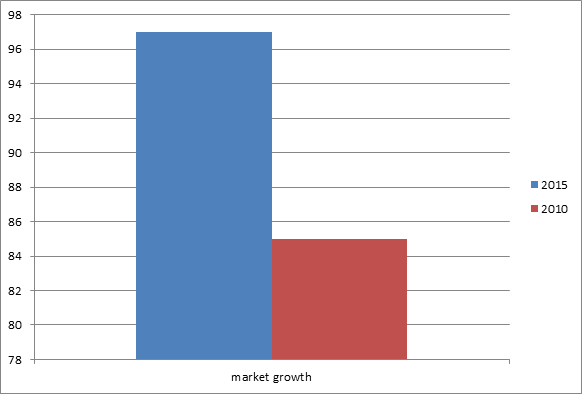
Industry Report - Industry SWOT Analysis Chapter
The Nursing Facilities industry is in the mature stage of its life cycle. Over the 10 years to 2021, industry value added (IVA), which measures the industry's contribution to the US economy, is expected to grow at an average annual rate of 3.4%. This growth rate indicates that the industry will expand faster than GDP, which is projected to increase at an annualized rate of 2.2% over the same period. While demographic trends will continue to promote industry growth, nursing care facilities have been part of American communities since the early 20th century.
Industry Analysis & Industry Trends:
Over the five years to 2021, the industry is expected to continue expanding. Continued aging of the population, which is expected to accelerate over the five-year period, will drive industry growth.
Global Skilled Nursing Care Services Market, By Type of Connectivity-
- Connected to hospital
- Connected to assisted living community
- Connected to both hospital and assisted living community
- Freestanding
Major regions analyzed under this research are:
- Europe
- North America
- Asia Pacific
- Rest of the World
- Australia
Conference Highlights
- Cardiac Diseases
- Cardiac Surgery
- Cardiac Nursing
- Heart Diagnosis
- Types of Cardiology
- Hypertension, Obesity & Stroke
- Coronary artery disease
- Cardiologists
- Heart Regeneration
- Angiography & Interventional Cardiology
- Clinical Cardiology & Diabetes
- Nursing Care
- Cardiac Pharmacology
- Case Reports on Cardiology
- Clinical cardiac electrophysiology
- Pediatric cardiology
- Cardiac Research
- Advanced Nursing
To share your views and research, please click here to register for the Conference.
To Collaborate Scientific Professionals around the World
| Conference Date | September 09-10, 2019 | ||
| Sponsors & Exhibitors |
|
||
| Speaker Opportunity Closed | |||
| Poster Opportunity Closed | Click Here to View | ||
Useful Links
Special Issues
All accepted abstracts will be published in respective Our International Journals.
- Journal of Nursing & Care
- Journal of Clinical & Experimental Cardiology
- Journal of Cardiovascular Diseases & Diagnosis
Abstracts will be provided with Digital Object Identifier by










